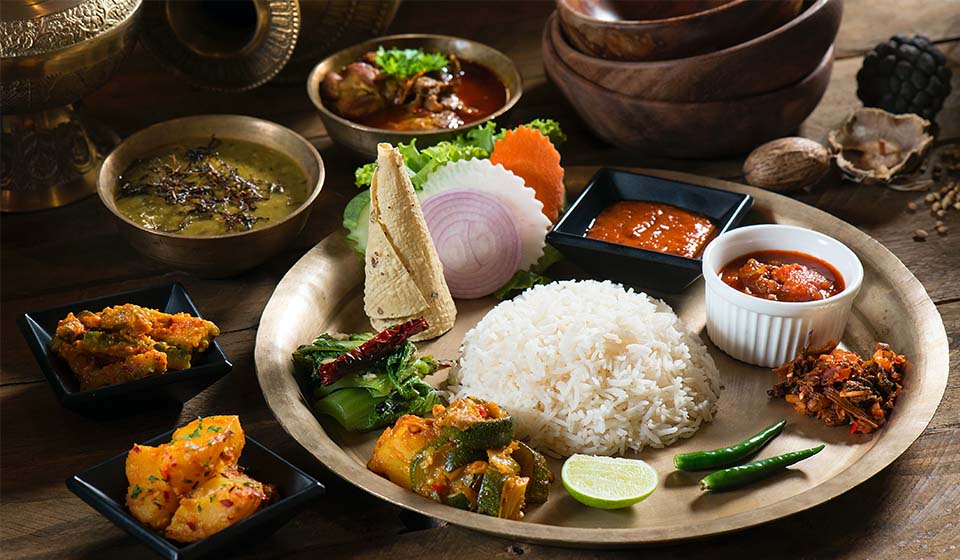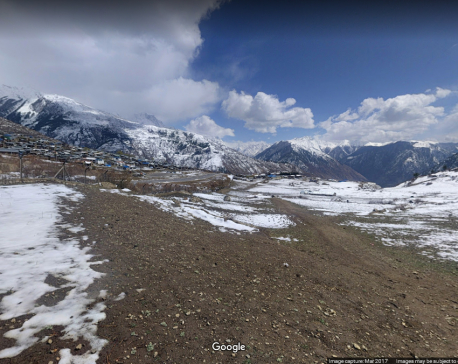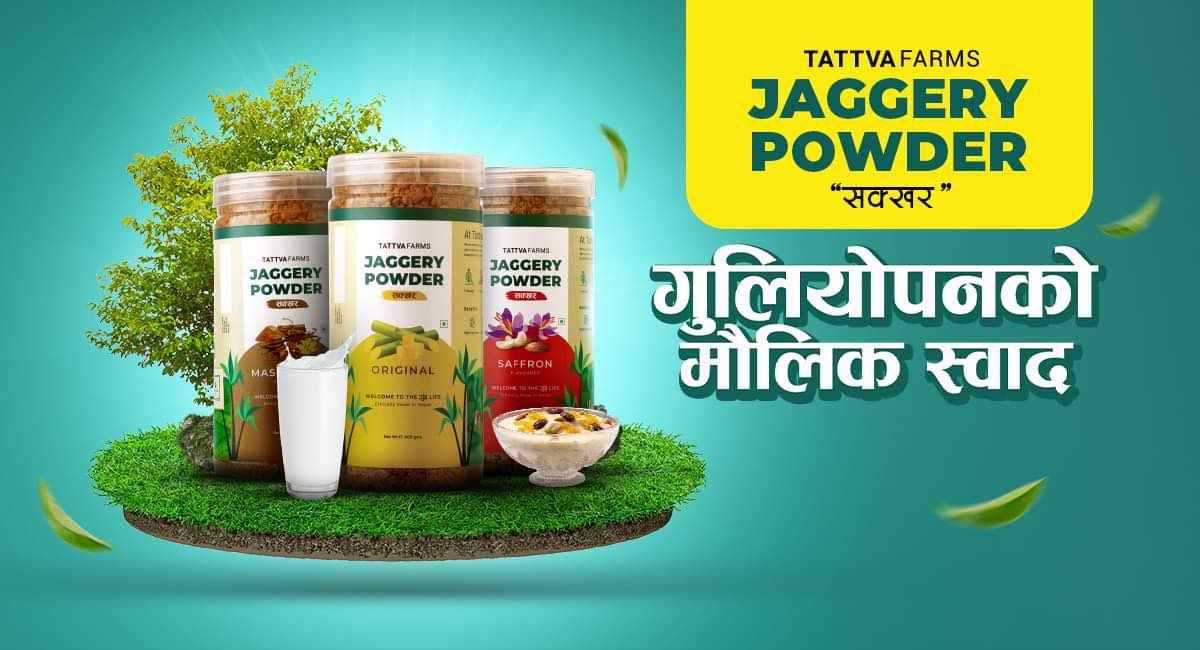
OR
Opinion
Putting Nepali Food in the World Map of Culinary Delights
Published On: November 25, 2022 03:45 PM NPT By: Binod Baral


Binod Baral
The author is a London-based Chef and the Head of Research & Development Department and Innovation Kitchen at the World's Best Gourmet Entertainment Groupnews@myrepublica.com
When national identities and regional integrity are contested, food you eat becomes a tool for political and historical assertion. The dining culture paints pictures of our local, regional and national identity. On the other hand, it also operates as an expression of cultural identity in unknown foreign countries.
‘Khana/nasta/chiya khanu bhayo?’ is a question that a Nepali person frequently answers. We say it almost as a greeting, an ice-breaker of sorts — a natural successor to our ‘Namaste’. This simple question has a lot to say about our Nepali way of life and its connection to food. Food is a huge part of our culture – offering water in Nepal is like saying hello in the Western world.
Food is tightly embedded in the identity and culture of a place. I have long studied and learned during my traveling time, this role of gastronomy in cultural identity. Food can be compared to language in its power to express social structures and cultural systems. Food is a symbol of cultural exchange, but most importantly, cultural integrity. We could say that the story of a nation’s diet is the story of a nation itself. And what an interesting tale could it tell!
Historically, food has been a symbol of comfort, luxury, hardship, family and togetherness. The availability of certain types of food, their method of preparation, how they are consumed, dining habits, etc. can reflect the socio-economic conditions of a country. We must have sometimes wondered why we South Asians consume rice and roti as our staple diet while South East Asians consume noodles, don't we?
I have found in my many travels that food has a way to connect people. The relationship between food and identity is not a new one. When we put food around a table to share a meal, walls come down and minds open because it is something we can share -- a common denominator for all of us because humans have evolved to share food to create love.
Every country has foods we associate with it, a food identity of sorts. The British have fish and chips, Americans their fried chicken, Mexicans have tacos, India has innumerable national and regional culinary delights such as dosa, biryani, butter chicken, vadapav. Drinks such as Irish beer, Japanese sake, Korean soju, Scottish whiskey — all of these act as national identities beyond the dinner table.
Talking about Nepal, food is our identity, a looking glass into our culture. Each festival has its special delicacies. Sel roti for Tihar, ghyuchaku for Maghe Sankranti, Newari bhoj are some examples of food giving identity for Nepali festivals.
Any and every Nepali food conversation often remains incomplete without the mention of momos. These soft savory dumplings paired with spicy tomato chutney are one of the best dumplings in the world and a matter of national pride. We also have local delicacies which are must tries while visiting Nepal such as Dharan’s Rayo ko saag and Bangur ko masu (braised pork with wilted mustard green), Malekhu’s fried fish, Chitwan’s taas, Terai’s fulki, Kathamndu’s Newari khaja set etc.
These culinary associations with places have been widely popularized by social media food vlogging and blogging word of mouth culture. What seems lagging though is the promotion of these local delicacies to foreign tourists. Foreigners rarely venture out to try these dizzying array of food Nepal has to offer. This is an area of untapped potential as we could promote our delectable local and regional delicacies as tourism enablers.
National identities are expressed and maintained through dietary choices. The destiny of nations depends on how they nourish themselves. Empires have fallen when rulers couldn’t afford to feed their people. Learning about why we eat the food we eat is as important as learning the history of national landmarks. Food stories such as the South Korean invention of budaejjigae toward the end of the Korean war, and the origin of Nepali gundruk tell of societal endurance during times of hardship.
But when national identities and regional integrity are contested, food you eat becomes a tool for political and historical assertion. The dining culture paints pictures of our local, regional and national identity. On the other hand, it also operates as an expression of cultural identity in unknown foreign countries. Immigrants bring the food of their home countries with them wherever they go. Cooking traditional food becomes a means of preserving home culture while assimilating into these new places.
Lisa Nyugen, a Youtuber posted a short video of trying Nepali food recently which has thousands of likes and comments. The Fung Bros have done an entire episode on traditional Nepali food which was widely well received.
This interest that the world has in Nepali food can be translated into food diplomacy. Food diplomacy is a historical, well-strategized practice from generations. This practice is as old as human civilization. We would all happily share Nepali dal bhat with our guests if that meant they would go back home and talk about the experience they had.
Food being a common denominator can be used as instruments to create cross-cultural understanding in hopes of improving interactions and cooperation. The use of food and cuisine as a way for people of very different cultures to connect and learn is an incredible asset of the globalized world. There is no better medium for diplomacy than the nourishing, nurturing joy that we all associate with food!
As it has famously been said - “When all else fails feed them!” Food is an expression of love, a peace offering, a gesture of goodwill. The love of food is borderless and it knows no boundaries. Food can be an asset, a matter of national pride, a symbol of small delights that binds us as humans together. Learning to utilize food as an expression of love can not only create happy tummies but also be a tool of national promotion in the international system. Wouldn’t that be a hoot?
You May Like This

Biplav Maoists halt food supplies, Humla, Mugu under food shortage
HUMLA, Jan 21: For the past 10 days, the Biplav led Maoist faction have seized daily food supplies and 300... Read More...

15-year-old new mother without food for a week
MUSARNIYA, August 20: There was no sign that the continuous rain since Friday night would stop till Saturday morning. Suddenly, water... Read More...

Comfort food for winter
Winter is all about being comfortable and eating food that soothes your soul. The Hyatt Regency has put together a... Read More...




Just In
- Tattva Farms rejuvenates Nepali kitchens with flavored jaggery
- Evidence-Based Policy Making in Nepal: Challenges and the Way Forward
- Insurers stop settling insurance claims after they fail to get subsidies from government
- Nepal-Qatar Relations: Prioritize promoting interests of Nepali migrant workers
- Health ministry to conduct ‘search and vaccinate’ campaign on May 13
- Indian customs releases trucks carrying Nepali tea, halted across Kakarbhitta
- Silent period for by-election to begin from midnight
- SC issues short-term interim order to govt and TU not to take immediate action against TU legal advisor Khanal













Leave A Comment